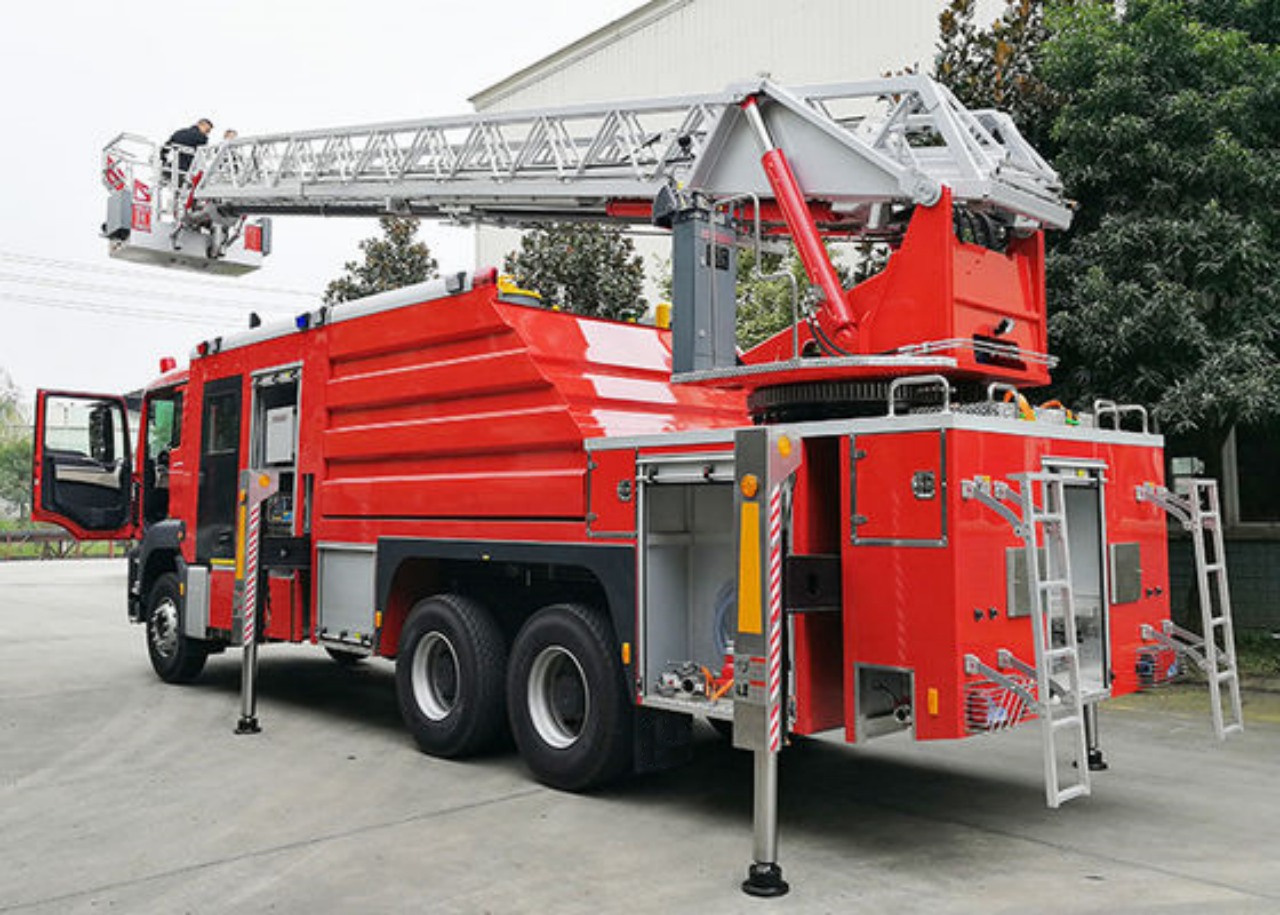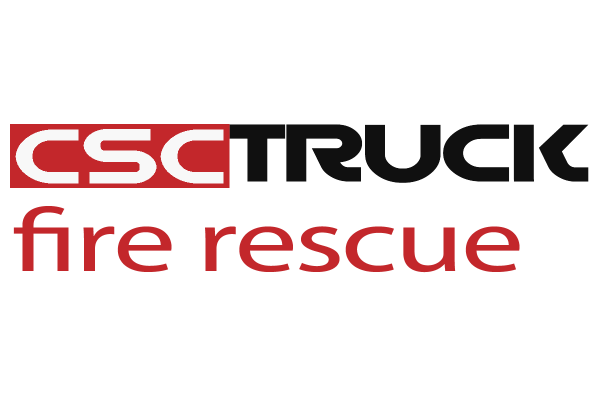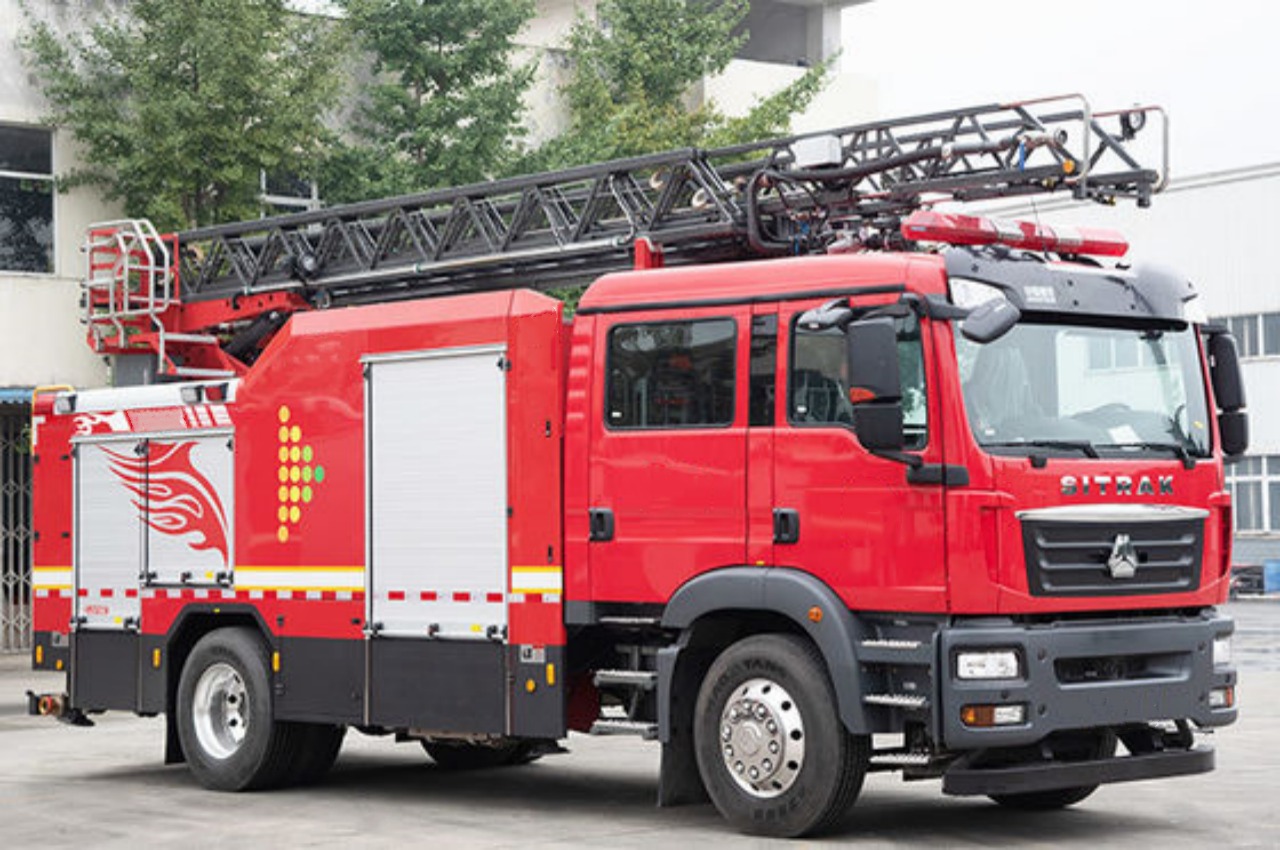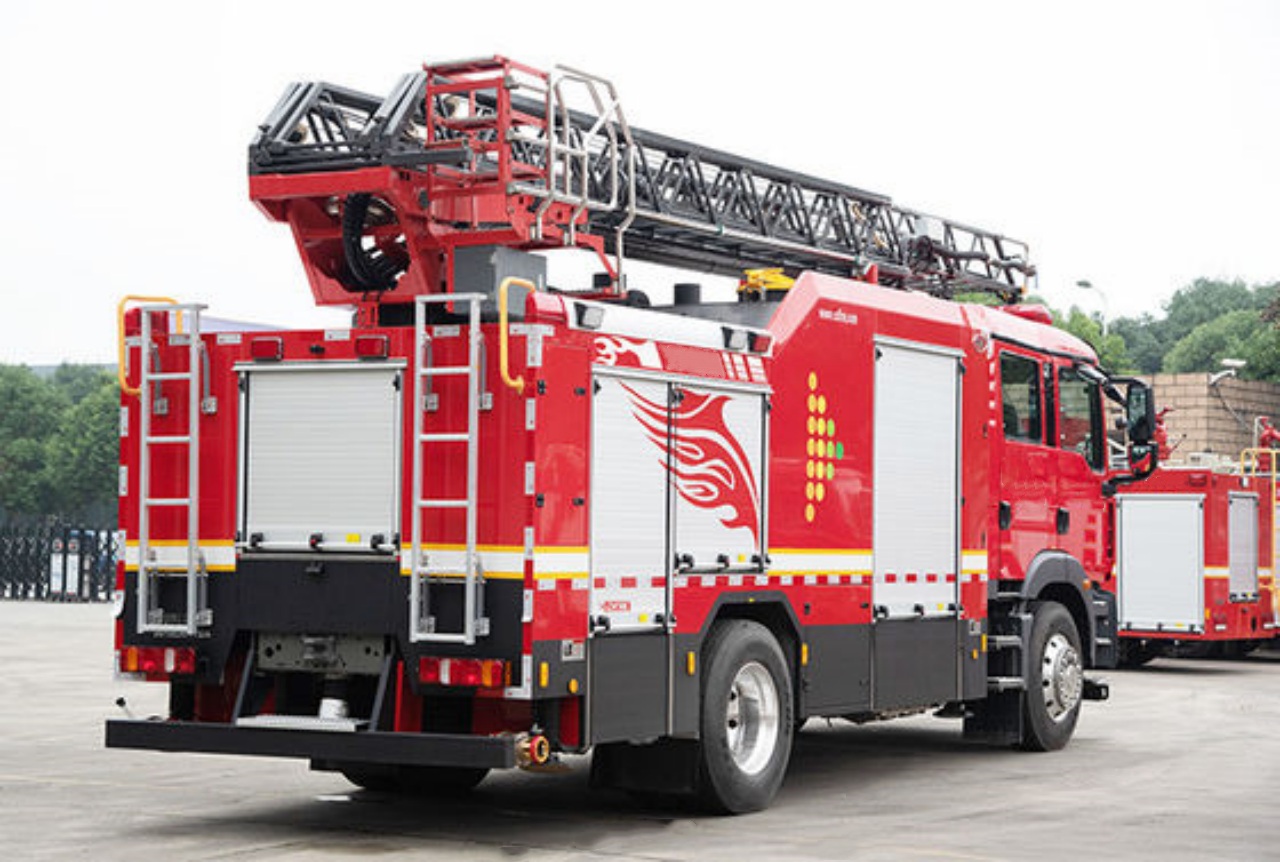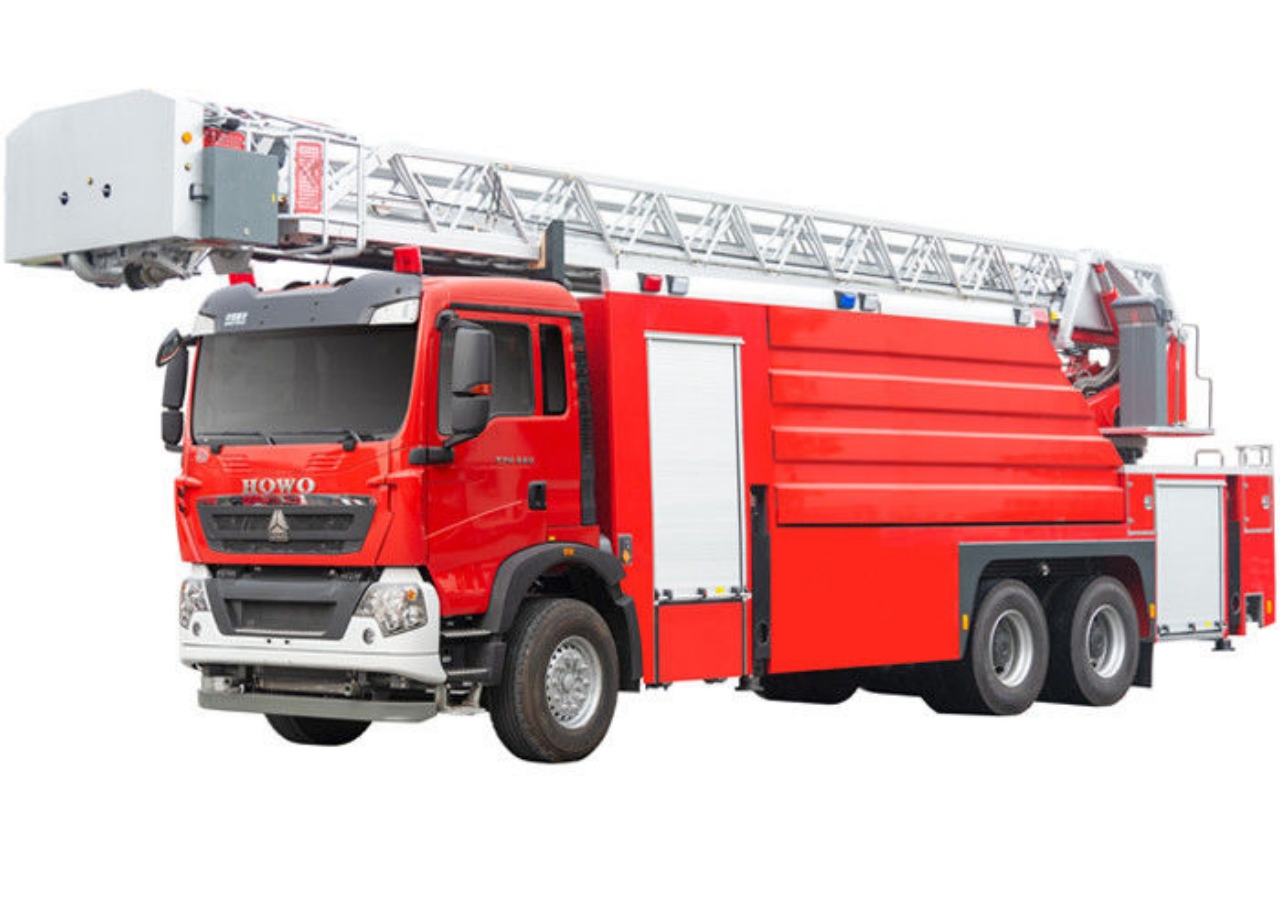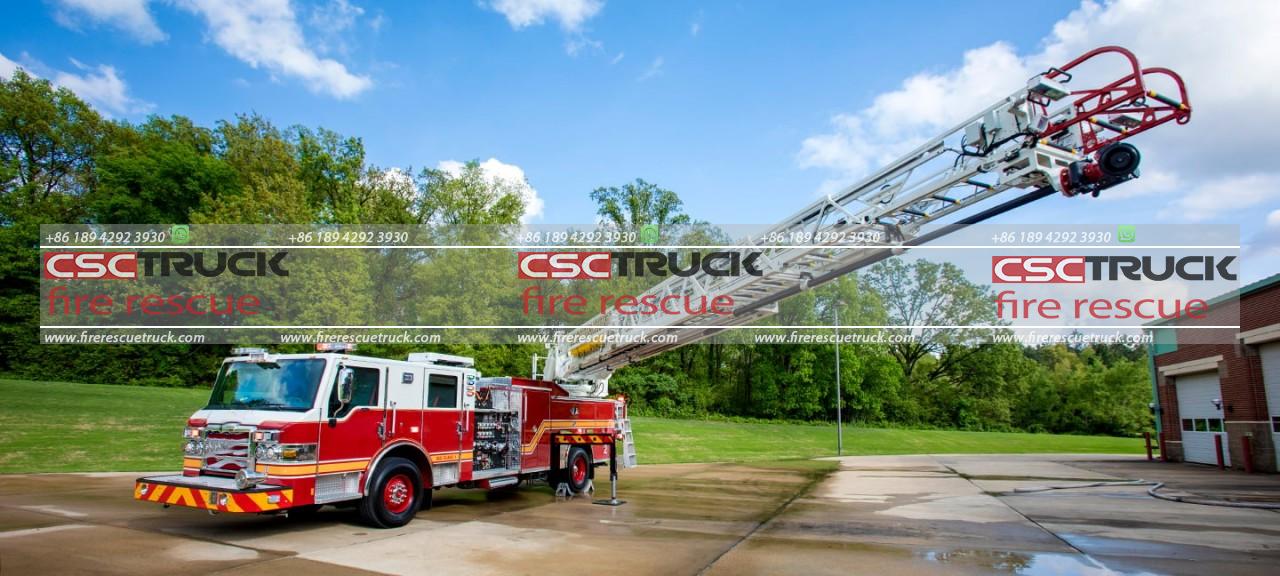Fire trucks, the iconic red giants of emergency response, are marvels of engineering built to combat a variety of hazardous situations. Among their most recognizable and crucial features is the extendable ladder. These ladders are not just simple climbing tools; they are sophisticated mechanical systems designed to reach towering heights to rescue people, ventilate buildings, and allow firefighters to gain access to upper stories in fires and emergencies. But just how big is the ladder on a fire truck? The answer depends on the type of fire truck, its intended use, and the specific design parameters chosen by fire departments. This article explores the sizes, capabilities, and considerations involved in fire truck ladders.
The Basics of Fire Truck Ladders
There are multiple types of ladders used by fire departments, but when most people refer to “the ladder on a fire truck,” they are referring to the aerial ladder. This is a telescoping ladder mounted on a turntable (rotating platform) atop the truck chassis, allowing it to rotate 360 degrees. Aerial ladders are usually found on ladder trucks, also known as aerial ladder trucks or truck companies in firefighting terminology.
The size of a fire truck ladder is typically measured in feet or meters, and the measurements refer to its maximum vertical extension when fully deployed. The ladders are designed to operate both vertically and at an angle, allowing firefighters to reach rooftops or windows at varying elevations.
Common Ladder Lengths on Fire Trucks
Fire truck ladders vary widely in length depending on the manufacturer and the purpose of the vehicle. However, here are some common size categories:
- Standard Aerial Ladder (75 Feet / 23 Meters)
A typical municipal fire department may use an aerial ladder that extends to 75 feet. These ladders are often mounted on single-axle or tandem-axle trucks, making them maneuverable in urban environments. A 75-foot ladder can comfortably reach the roof of a 6- or 7-story building, depending on how close the truck is to the structure. - Mid-Size Aerial Ladders (100 Feet / 30 Meters)
The 100-foot ladder is perhaps the most popular size among fire departments in medium and large cities. This ladder can reach the upper floors of 8- to 10-story buildings and provides extended horizontal outreach when fighting fires in buildings set back from the street. These ladders are mounted on larger chassis and often require tandem rear axles for support. - High-Reach Aerial Ladders (115–137 Feet / 35–42 Meters)
Some specially designed fire trucks feature ladders that reach between 115 and 137 feet. These are typically used in cities with many high-rise buildings. An example is the Bronto Skylift, which is technically an aerial platform but includes a hydraulic arm with ladder segments that can extend to 170 feet (52 meters) or more. These units are extremely large and require extensive training to operate effectively. - Tower Ladders and Platforms
Some aerial trucks do not use straight ladders but instead feature a bucket or platform at the top of a telescopic boom. While these may not be as long as straight aerial ladders, they offer added safety and stability for personnel and victims during rescues. Sizes typically range from 85 to 100 feet, though specialized models may exceed 130 feet.
Factors That Affect Ladder Size
Several factors influence the decision on how big a fire truck ladder should be:
- Building Heights in the Coverage Area: Departments in dense urban areas with taller buildings require longer ladders than those in suburban or rural communities.
- Truck Maneuverability: Longer ladders require larger trucks, which may be difficult to navigate on narrow streets or in congested areas.
- Weight and Balance: Longer ladders increase the vehicle’s center of gravity and overall weight, necessitating advanced suspension and stabilization systems.
- Budget Constraints: Larger ladders and the trucks that carry them are significantly more expensive, sometimes costing USD 1 million or more.
Design and Engineering Considerations
Aerial ladders are designed to be robust, lightweight, and durable. Most are constructed from high-strength steel or aluminum alloys to maximize extension without compromising structural integrity. The ladder is mounted on a rotating turntable, which allows it to pivot 360 degrees and operate in tight urban spaces.
A ladder’s effective reach is not just a factor of length but also angle and elevation. For example, a 100-foot ladder mounted on a truck that is parked 30 feet from the building will not reach 100 feet vertically but rather somewhere around 70–80 feet in vertical height due to the angular deployment.
Moreover, ladders are often equipped with integrated water delivery systems, known as ladder pipes, which allow firefighters to spray water from the tip of the ladder. These systems can deliver thousands of gallons per minute and are useful for defensive firefighting or cooling large structures.
Special Features and Safety Systems
Modern fire truck ladders include a host of safety features:
- Safety Rails and Fall Protection: Handrails and harness attachment points are standard for firefighter safety.
- Automatic Stabilizers (Outriggers): Extendable legs deploy from the sides of the truck to stabilize it during ladder operation.
- Angle and Load Sensors: Ensure the ladder isn’t operated beyond safe limits.
- Wireless Controls: Many systems include remote controls to operate the ladder from a safe distance.
- Thermal Cameras and Floodlights: Attached to the ladder tip to improve visibility during night operations or in heavy smoke.
Comparing Fire Truck Ladders Globally
Ladder sizes can differ by country due to local building codes, street widths, and emergency response protocols. For instance:
- In the United States, 100-foot ladders are very common, and urban departments may have 137-foot models.
- In Europe, cities with narrower streets often use articulated ladder trucks or compact platforms that can still reach 90–100 feet but offer better maneuverability.
- In Japan, where buildings are densely packed and streets are extremely narrow, smaller ladder trucks with extendable booms or telescopic arms are used, often capable of reaching 65–100 feet.
Conclusion
So, how big is the ladder on a fire truck? The answer ranges from 50 feet (15 meters) on compact units to over 137 feet (42 meters) on high-reach aerials. The ladder’s size is dictated by a mix of operational needs, structural considerations, and environmental demands. These ladders are not just large—they’re the result of meticulous engineering, designed to save lives and provide access in the most challenging of circumstances. Whether in a downtown high-rise or a suburban apartment building, the aerial ladder remains a vital tool in the firefighting arsenal, reaching heights and saving lives one rung at a time.
